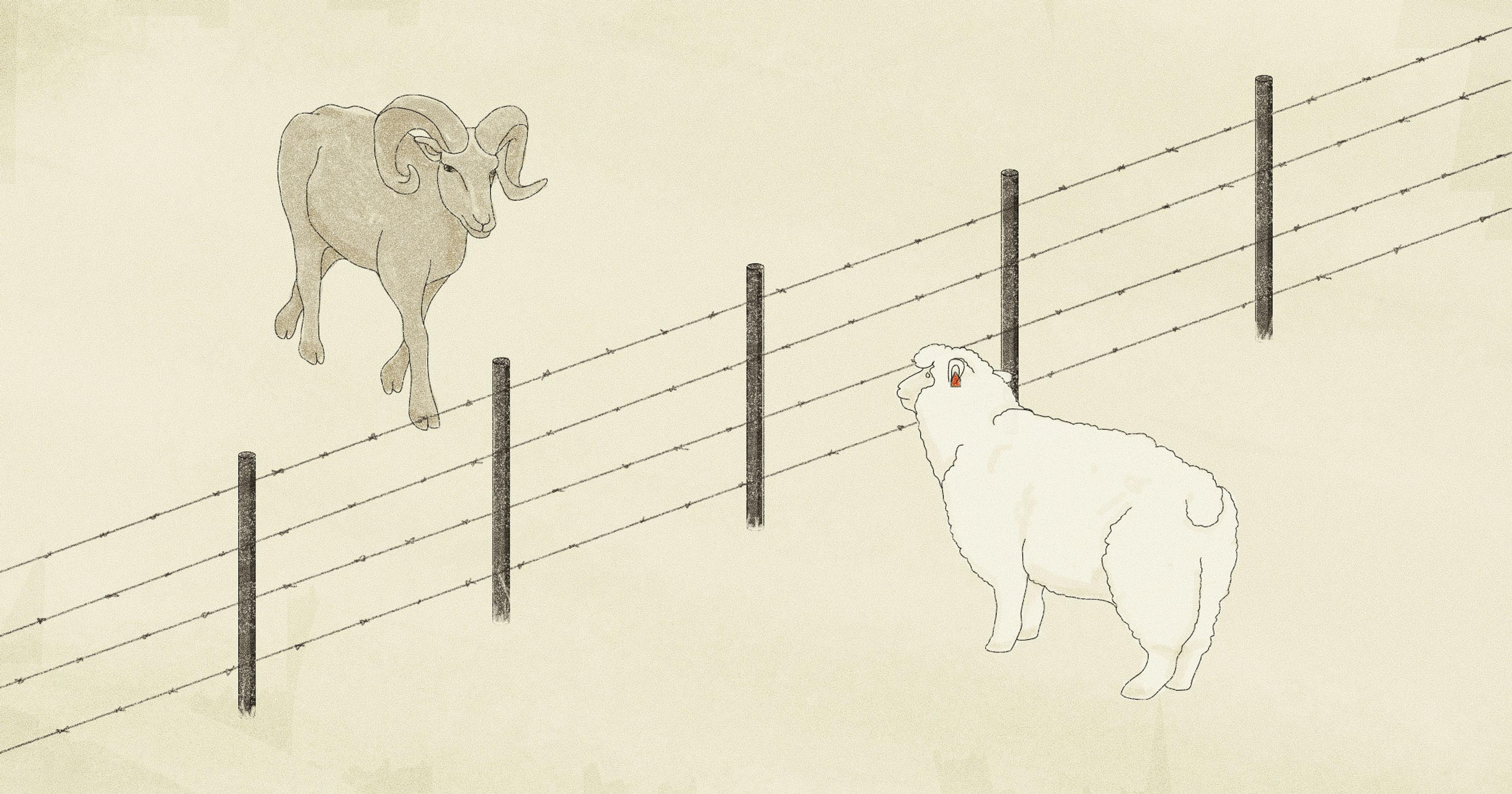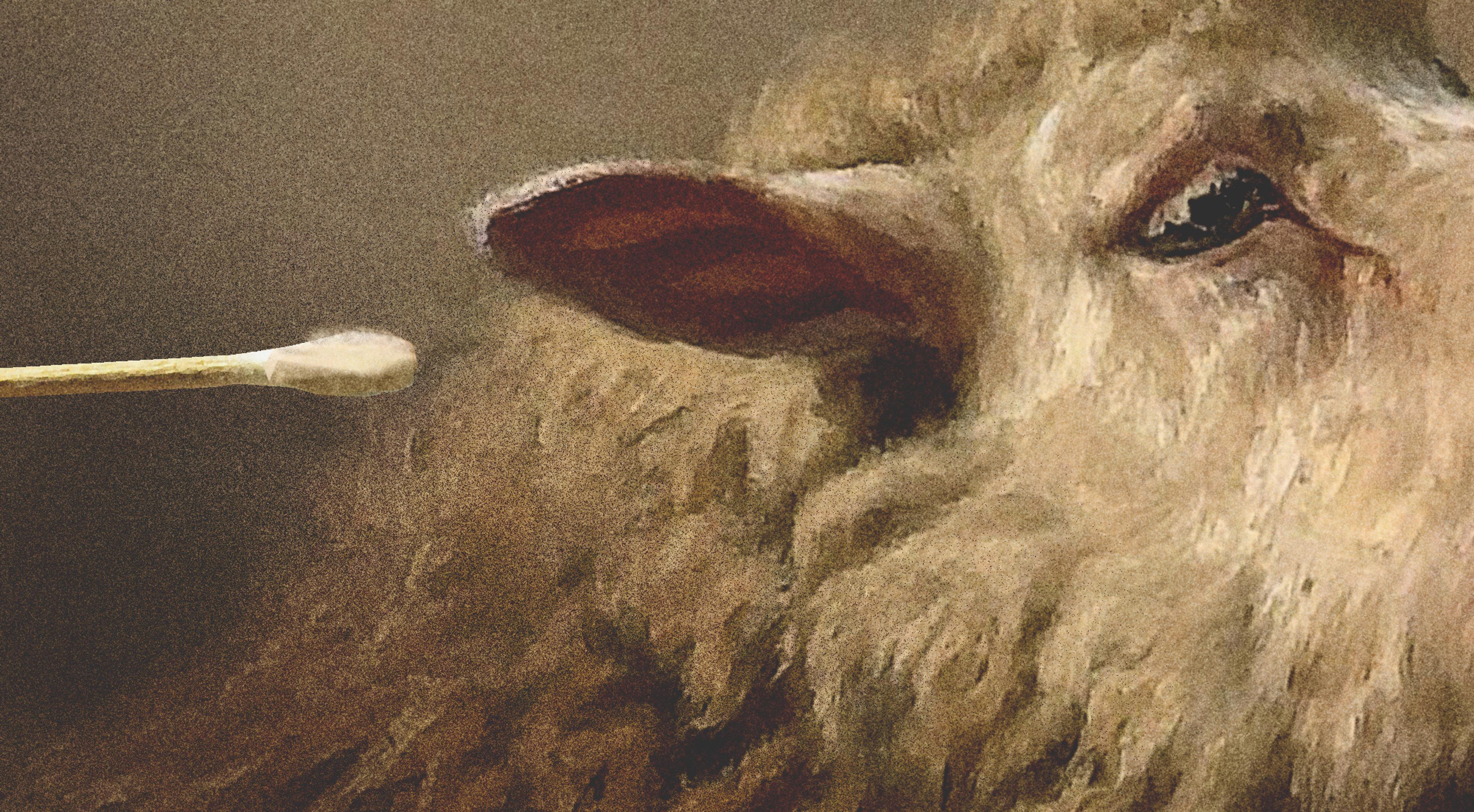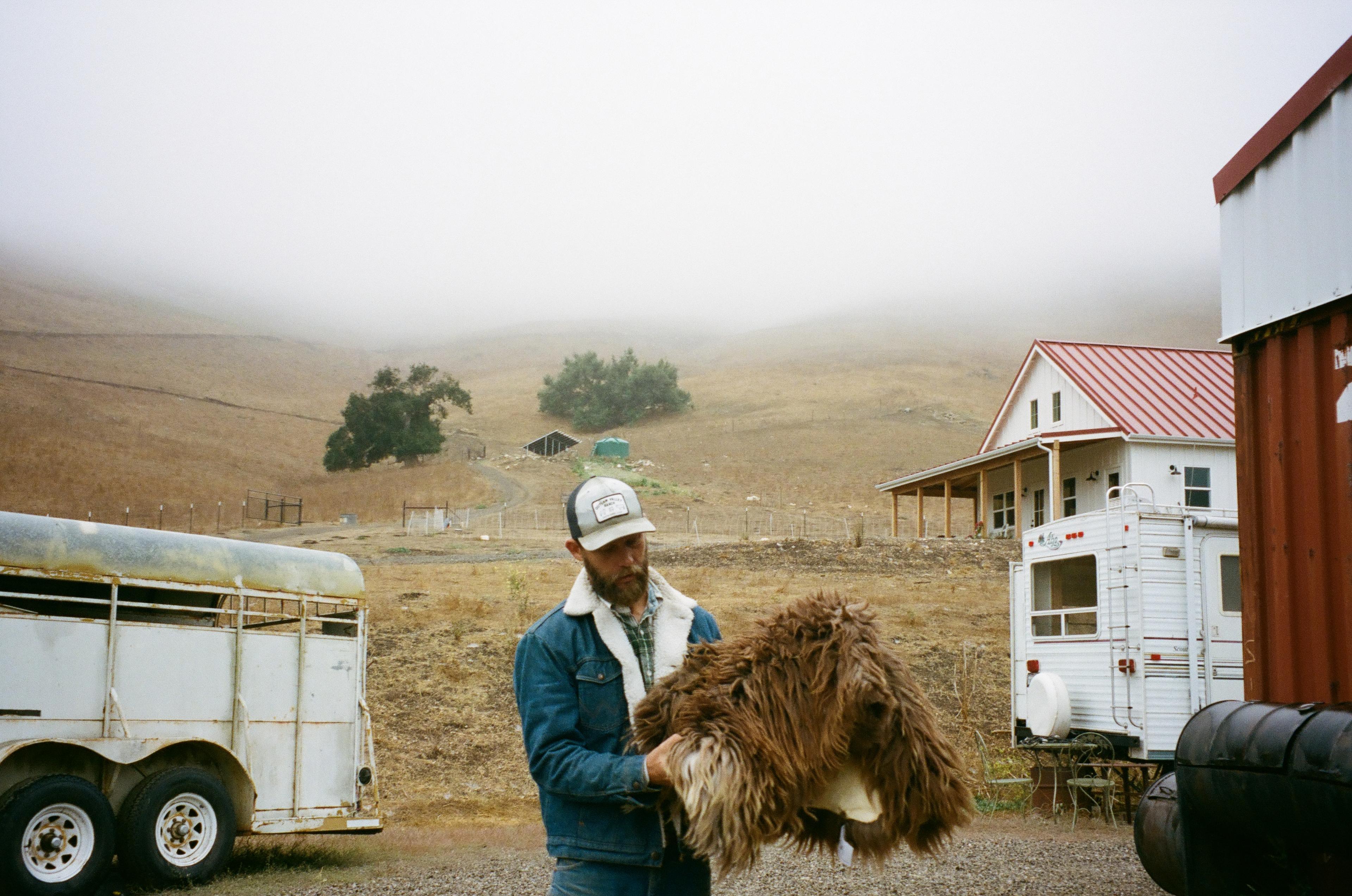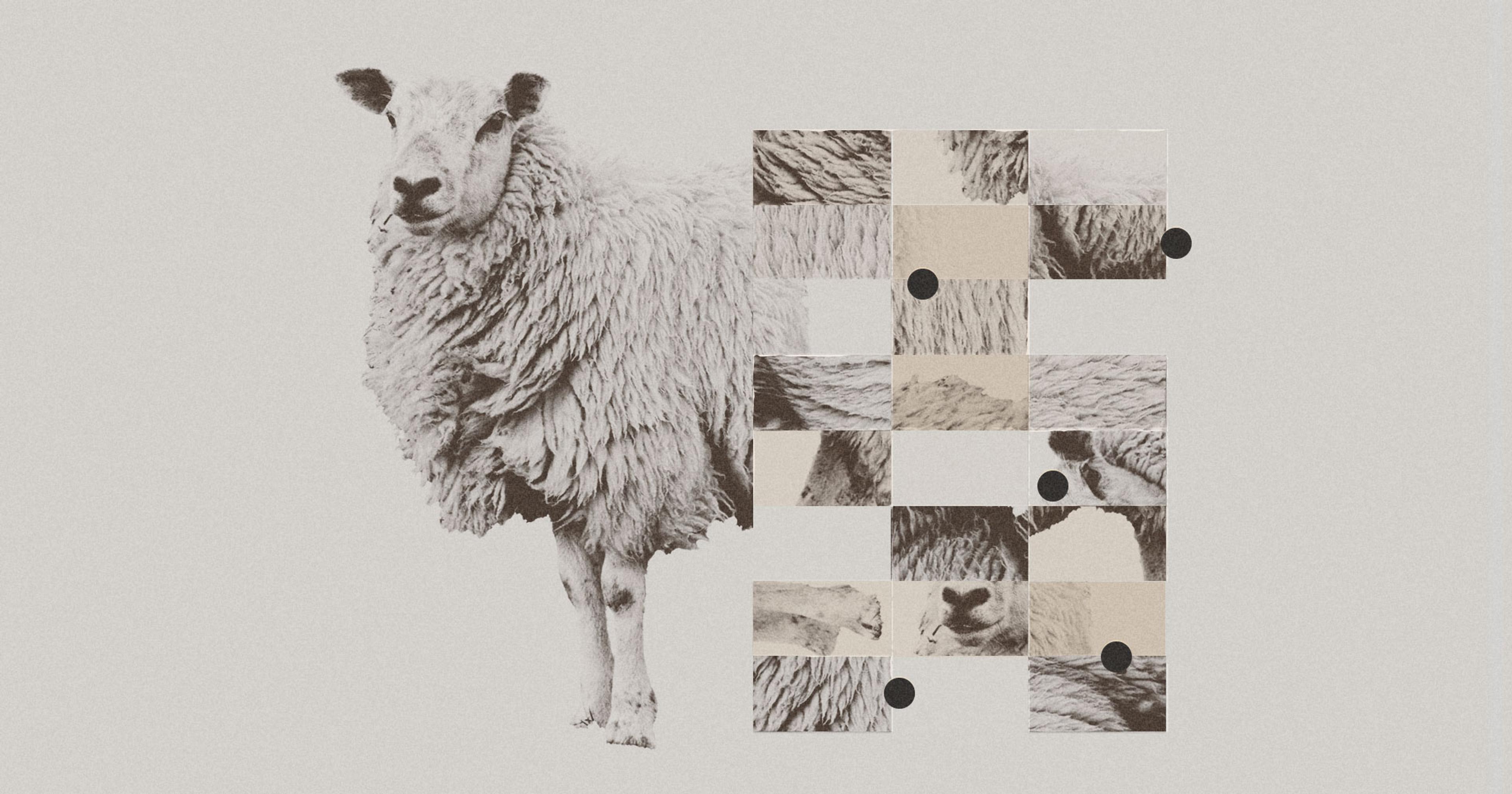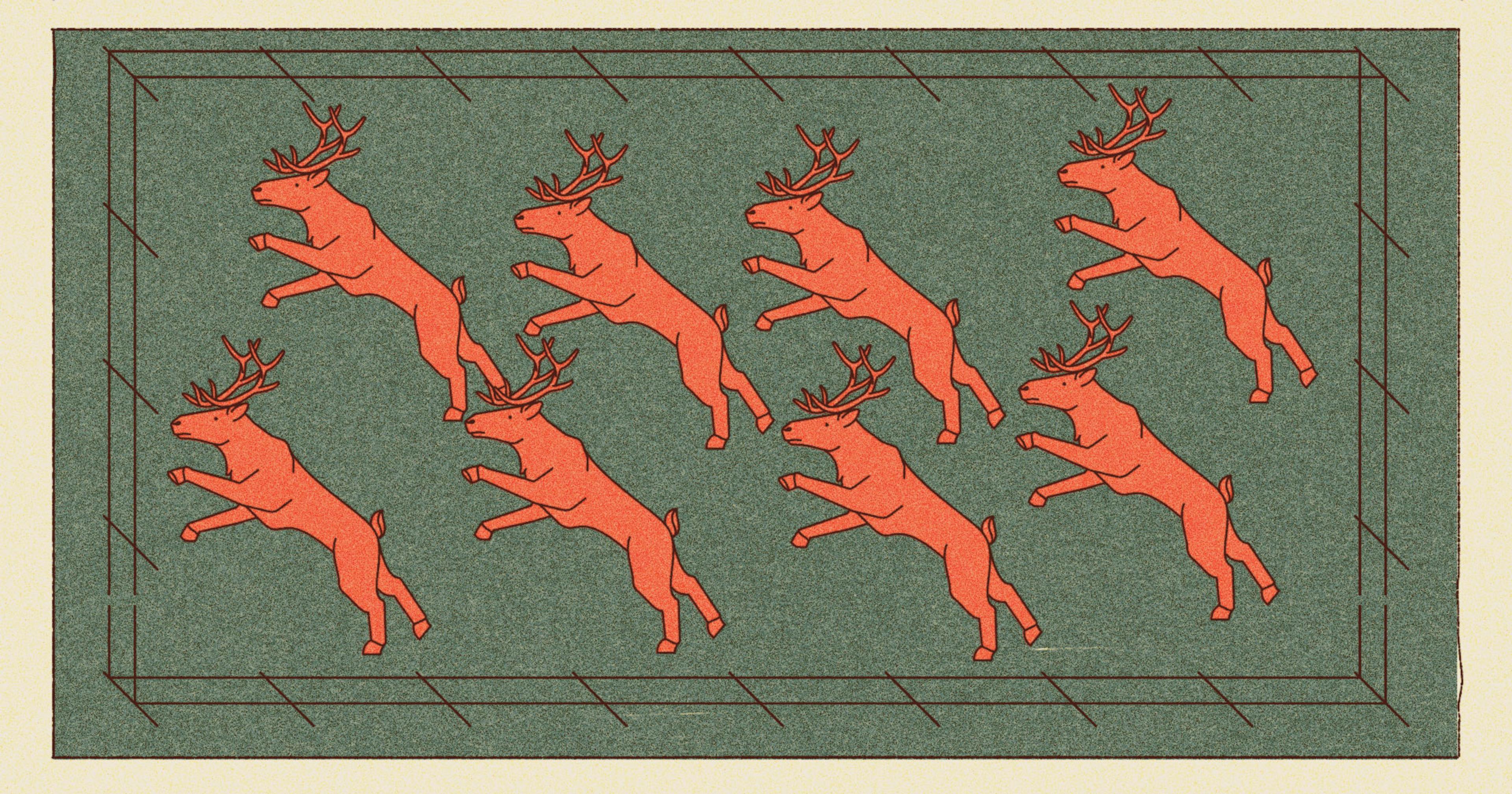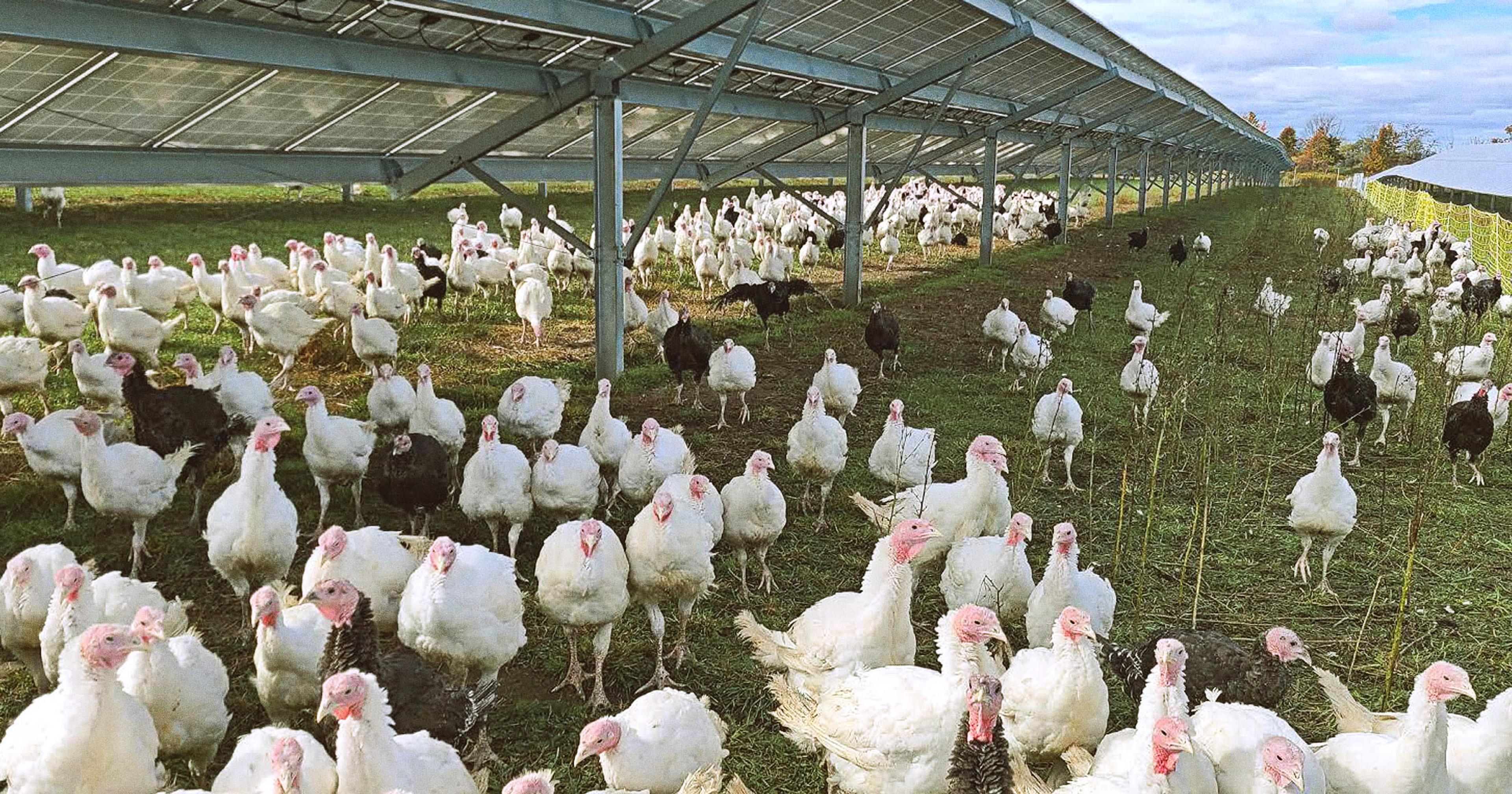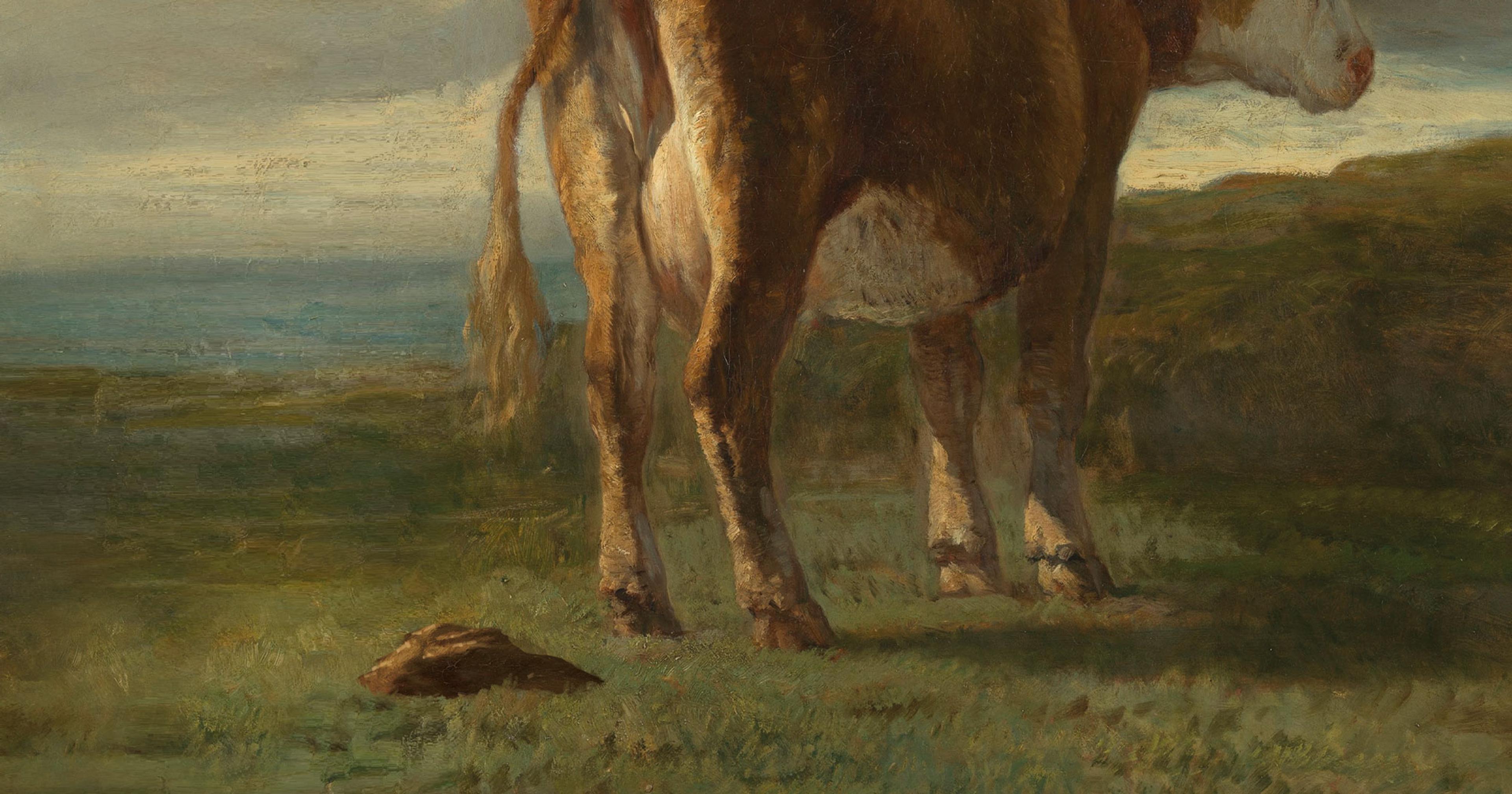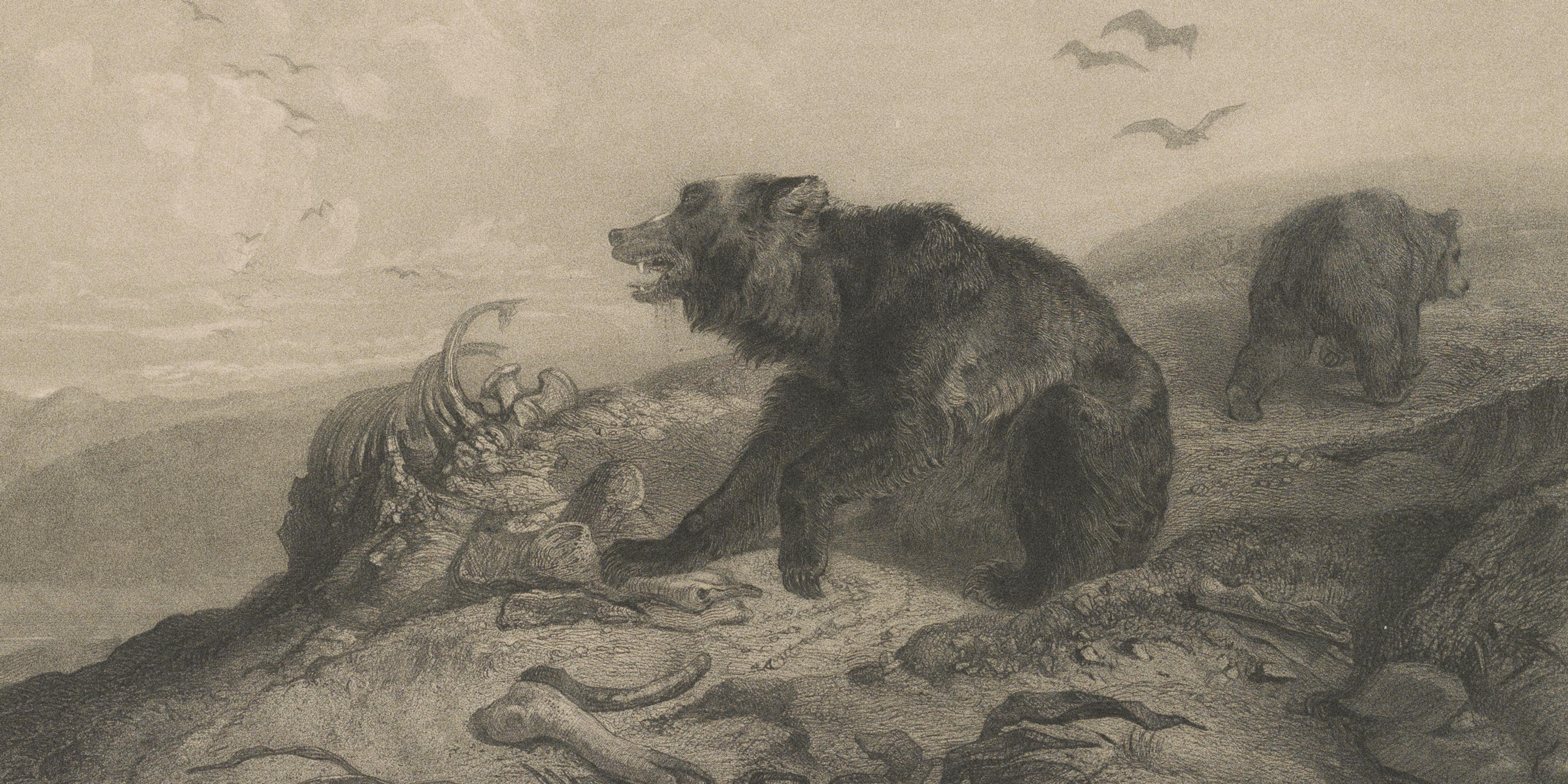Bad things can happen when domestic and wild sheep mix. A new collaborative research project in Montana is trying to come up with new solutions to an intractable disease problem.
Kelly Ingalls is a third-generation Montana sheep producer; he runs a flock of more than 1,000 in Broadwater County. In summer he trails them east to the Big Belt Mountains. In fall he brings them home, separates out the lambs, then takes the ewes southwest to the Elkhorn Mountains, where they’ll spend the winter on a mix of federal and private land.
The Elkhorns are also home to a herd of wild bighorn sheep. Occasionally one of the bighorns will get curious about the domestic sheep, or a ram is attracted to the ewes. Ingalls does his utmost to make sure that they don’t get too close. He employs herders who are always on the alert, plus he keeps guard dogs. “They are very very good at chasing things off,” Ingalls said.
At one time, bighorn sheep — named for the males’ bulky curving horns — graced rugged mountainous terrain across Western North America. But over many decades habitat loss, hunting, and disease decimated populations, which dropped from historic highs of one to two million to just 20,000 in the early 1900s, according to some estimates. Following extensive conservation and restoration efforts, the bighorn numbers across North America now sit at nearly 70,000. But they still haven’t bounced back in the same way as other species like elk or deer, said Emily Almberg, disease ecologist at Montana Fish, Wildlife & Parks.
One of the major reasons is a bacteria called Mycoplasma ovipneumoniae (M. ovi). Domestic sheep and goats often carry M. ovi in their nasal cavities, and it causes them few, if any, problems. But wild sheep and goats, including bighorns, do not have the same level of resistance. The bacteria attacks the protective cilia in their nostrils, leaving them open to other respiratory pathogens. If domestic and wild sheep mingle, the bacteria can be transmitted from the domestic to wild sheep, leading to pneumonia outbreaks. Whole herds can be virtually wiped out, followed by low lamb survival for years (though there is some variation in mortality rates that’s not yet fully understood).
“It’s so frustrating when you spend years and literally millions of dollars trying to bolster your bighorn herds, and then they can crash in, you know, a matter of months,” Almberg said.
Many say the best way to prevent transmission is strict separation between domestic and wild sheep. But in a multi-use landscape like Montana, maintaining the recommended 9-mile buffer around bighorn herds isn’t easy, according to Jared Beaver, assistant professor and extension wildlife specialist at Montana State University (MSU). That’s stalling recovery plans, and has led to tension between conservationists, who want to see bighorn recovery, and producers, who must take precautions to prevent transmission yet may feel blamed when disease outbreak occurs.
“It’s so frustrating when you spend years and literally millions of dollars trying to bolster your bighorn herds, and then they can crash in a matter of months.”
Now, a new research project led by MSU and Montana FWP and collaboratively created with input from producers, land managers, and biologists, is trying to figure out what makes comingling between domestic sheep and bighorns more likely.
“If we can get a better understanding of those patterns and risk factors, then we can start to develop more flexible and adaptive strategies that will help both wild and domestic sheep thrive on the landscape,” Beaver said. “At the end of the day, it’s not about choosing sides. It’s about finding shared solutions.”
The project is focused on eight bighorn herds where Montana FWP has ongoing research. Within these herds, bighorn sheep have been fitted with GPS collars that record position data at set intervals. The collars have also been programmed with a virtual fence that alerts the research team when the animals get within 200 meters of a domestic sheep flock or pasture.
One of the team can usually get there within about four hours and will collect data on things like the sex and age of the bighorns, their behavior, and if the producers have recently put out any potential attractants like hay. That will help researchers figure out what factors or management practices encourage or discourage mingling.
So far the team has recorded more “contact events” than expected. “When we were designing the project, I think one of my personal fears was that we’d have a whole lot of zeros and there’d be no contact to work with. So that’s not the case. And I think [contact] is happening more than we realize,” Almberg said.
About a third of the producers asked were not aware of M. ovi or the danger it posed to wildlife herds.
These contact events do not mean there’s been disease transmission, the researchers note. M. ovi is carried through respiratory droplets and is thought to be transmitted at distances up to 39-49 feet. But understanding where, when, and why domestic and wild sheep overlap will give researchers a better idea of where there’s risk.
Preliminary data also shows that contact isn’t just occurring during the late fall rut (aka, mating season), as was previously hypothesized. Nevertheless, contact was confined to a small subset of domestic sheep operations, just 3% of those within that recommended 9-mile buffer zone, said Smith Wells, research associate at MSU.
These appear to be mostly those with smaller flocks, whose pastures butt up against bighorn habitat. “This shows that disease risk is variable across the landscape and may be higher in certain areas or circumstances,” Smith said. “So that’s what we’re trying to look at. What are those underlying factors that are least resulting in that variability in risk?”
Ingalls is not involved in the study, as the Elkhorn Mountains, near his grazing allotment, are not in the study area. But he hopes the research will provide new insights. Ingalls has seen the impact of M. ovi on bighorn sheep firsthand. Back in 2007, an M. ovi-connected pneumonia outbreak killed 90% of the Elkhorn bighorn herd, leaving just 20 animals. Today the herd is slowly recovering and is now up to an estimated 75 animals, according to Adam Grove, wildlife biologist with Montana Fish, Wildlife & Parks.
Yet M. ovi is an everpresent danger. Ingalls still worries about the possibility of contact between his sheep and bighorns, despite the preventative measures he has in place. “The more we understand about how the interaction [between domestic sheep and bighorns] can occur, we might be able to prevent that from happening in the future,” Ingalls said. “That gives you a better tool.”
One study found that M. ovi infection could cost producers 4.3% in lamb productivity per year.
The new research project is also highlighting the need for more awareness; about a third of the producers asked were not aware of M. ovi or the danger it posed to wildlife herds. That lack of awareness has been an ongoing problem, said Brent Roeder, sheep and wool extension specialist at MSU.
National and regional organizations like the Montana Wool Growers Association do a good job educating their members about M. ovi, he said. But it’s hard to reach very small producers, those that have just a few sheep. (Don’t call them hobby farmers, Roeder warned.) “Fifteen years ago, we were discussing the same issue, how do we educate the small and very small scale producers on the topic,” Roeder said.
There are still a lot of unknowns when it comes to M. ovi, including why it impacts some bighorn populations much more vigorously than others, said Helen Schwantje, eremitus wildlife veterinarian for British Columbia.
Most producers — and even veterinarians — also don’t know much about the impact of M. ovi on domestic sheep, she said. Yet one study found that M. ovi infection could cost producers 4.3% in lamb productivity per year.
In Canada, the long-running British Columbia Sheep Separation Program, started by Schwantje, offers producers free M. ovi testing, and advice on how to improve separation. She said that paying more attention to disease will bring benefits to both producers and wild sheep.
“Everyone involved, producers, wildlife managers, researchers, conservationists, we want the same thing. We want healthy herds.“
“If I was raising sheep where there was a likelihood of contact with wild sheep, I would test my sheep and ensure that they were mycoplasma [M. ovi] free … That will give you a better product, healthier animals, and reduce the risk to wildlife,” Schwantje said.
Diane Bimczok, professor of microbiology and immunology at MSU, is also trying to figure out ways to treat or prevent M. ovi infection in domestic sheep. Her recent trials with autogenic vaccines, a type of bespoke vaccine that can be rapidly developed from particular bacteria, are showing promise. In lab trials, which finished in September, researchers detected significant antibody response, though data analysis is ongoing, Bimczok said.
In the meantime, MSU researchers hope their work can help develop new strategies to prevent mingling and disease transmission between domestic and wild sheep.
“Everyone involved, producers, wildlife managers, researchers, conservationists, we want the same thing. We want healthy herds. We want resilient landscapes. And we want solutions that work.” Beaver said.

